Preparation for harvesting
Ken Stephens, New Zealand Tree Grower November 2012.
Quite a few years ago I was asked by a farm forester what the most important thing was when selling a woodlot. That really had me thinking for a while, and eventually I suggested that you actually had to know what you had for sale. By that I meant what log grades were there, and roughly the proportion in each grade. However, that is only one of many important things to try and get right.
For the first-time wood seller, there are many issues to deal with before you put any timber on the market and before employing any marketers or contractors. One of the great strengths of the NZFFA is the amount of knowledge members have which can be passed on to less experienced people. Farm forestry discussion groups are also a good avenue for knowledge sharing. Talk to someone with first-hand experience – you may just avoid some of the pitfalls.
Lead time and tax
Considerable lead time is required once the decision is made to sell trees because logging gangs and purchasers of logs need to be able to plan their activities. To give everyone enough time to find a good market for the logs and obtain a really decent logging crew, at least six months should be allowed before the first tree is felled. We have had log marketers approaching us in July wanting to harvest timber the following January.
If you are ready early it is more likely your trees will come down when you want them to, rather than having a harvest starting late and then needing to deal with bogged down trucks. One of the good things about trees is the fact that they do not deteriorate if left for another year. In fact, they keep growing. So if market conditions for timber are depressed you have the flexibility about whether to cut or not. However, because of leaving them for too long.
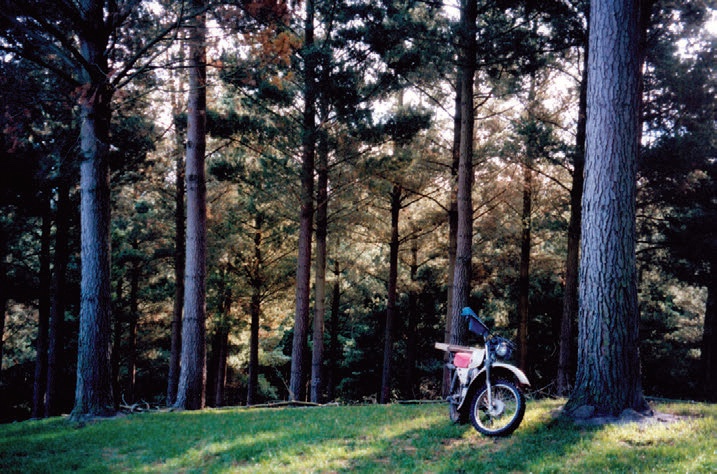
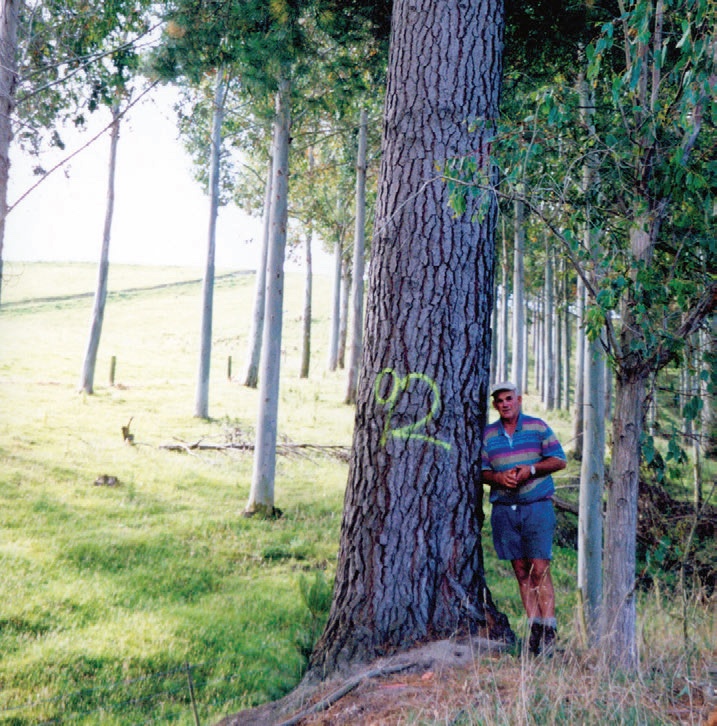
Before committing to cutting, it is also important to discuss selling your trees with your accountant so they can help in reducing your exposure to tax. This may even mean postponing the sale or spreading it over two or more financial years.
Access problems
Quite often the woodlots which are for sale have been planted in some of the less accessible parts of the farm. It was important 30 years ago to get the trees in the ground. Unless the property has particularly good roading access to the boundary of the woodlot, some metalling may be required. Alternatively, you may be able to get out through the neighbour’s property, but be aware of potential problems.
Even good all-weather tracks struggle to stand up to the pummeling of 44 tonnes of a laden logging truck and it is almost certain to rain at some stage of the logging operation. It is better to get the metal on the road before the chainsaws start than to try and do it between loads of logs. I have been there, done that. While on the subject of access, just check that all gateways which the logging rigs will be going through are wide enough to take a truck and trailer at an angle as these units have quite a large turning circle.
Many councils have restrictions on the number of logging truck movements in a month on some roads. This can have a limiting effect on the size of your logging gang. Early notification of your proposal to log to the council will help to keep your relationship with them harmonious. If you are planning to log on a regular basis, a logging plan should be forwarded to the council. Their roading maintenance programme can make allowance for extra traffic on your designated logging roads by spreading more metal.
Forestry consultants and marketing
There are many reputable forestry consultants around the country. Make a few enquiries from those who have sold woodlots and start the process by telephoning one or two and talking to them. If you are having trouble deciding on which consultant to employ, offer more than one of them the opportunity to market your woodlot. You, and the person you employ, have to be compatible, as they will be the main figure in the whole operation and need to have your confidence.
Before agreeing a contract collate as much information about the trees as you can, including age, pruning, photographs and thinning records. If the stand is of a reasonable size, a Marvel assessment may be worthwhile. This needs someone with special skills and will give the prospective purchasers an accurate estimate of the stand volume and quality. The cost of this assessment should be reflected in a better price to you. Having accurate records and good quality logs is also a great help when the time comes for repeat business with buyers, as they can be confident of the quality being offered.
Then it is the time to outline the harvesting deadline, by what time you would like the job completed, and let them go to work with a reporting back time of around 30 days. You will expect to see a logging schedule with all the different grades and specifications for those grades, and a gross price. From this price needs to be subtracted the logging, the freight and the commission giving a nett price per tonne to you. There will also be a relocation cost for moving the machinery on to the site and any other incidental costs.
Contracts
Once the most suitable operator has been agreed on by you and your consultant, a contract needs to be drawn up which covers at least −
- Start time
- Health and safety
- Removal of fences and reinstatement of broken posts
- Availability of load dockets for inspection
- Timing of payments to you, the grower
- The standard of clean-up on completion of logging
- The expected completion date.
The contract should also stipulate the number of times the consultant or one of their representatives will visit the skid site for quality control. Remember, a logging crew can produce a large number of logs in a day and this control is very important. If you see a potential problem, contact the consultant as they are the ones you are employing to oversee the operation.
Owner’s input
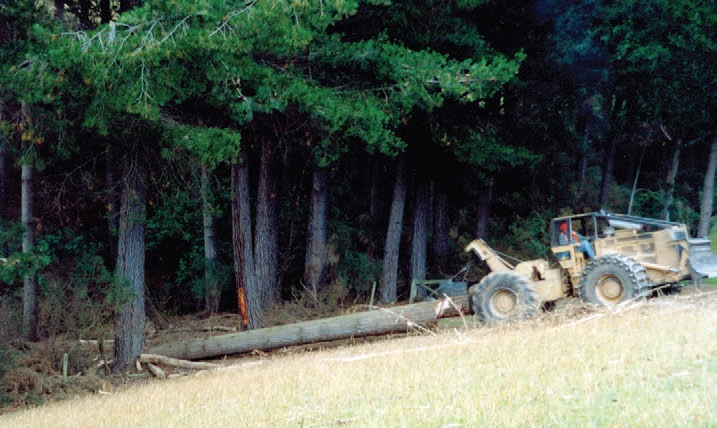 The consultant should arrange a meeting on-site with you, and the contractor or one of their representatives to identify any hazards, waterways that need protecting and proposed skid sites. The contractor also needs to be aware of Resource Management Act guidelines regarding matters such as skidder tracks. If your property has no gorse, broom or blackberry it is worth making sure the logging contractor clean their machines of all mud and seeds before coming on to the site. There is always plenty of soil disturbance, and weeds get in quickly enough without bringing them in on machines. While the logging operation is in progress, it is also important to visit the site to monitor progress and show a genuine interest. You will have spent 30 years or more and a considerable amount of money to get to this stage. Remember to always wear your hi-viz gear and your safety helmet. It is also a good time to take a few photographs. There should always be a copy of all the dockets for the loads which have left the property and you are entitled to see these on request.
The consultant should arrange a meeting on-site with you, and the contractor or one of their representatives to identify any hazards, waterways that need protecting and proposed skid sites. The contractor also needs to be aware of Resource Management Act guidelines regarding matters such as skidder tracks. If your property has no gorse, broom or blackberry it is worth making sure the logging contractor clean their machines of all mud and seeds before coming on to the site. There is always plenty of soil disturbance, and weeds get in quickly enough without bringing them in on machines. While the logging operation is in progress, it is also important to visit the site to monitor progress and show a genuine interest. You will have spent 30 years or more and a considerable amount of money to get to this stage. Remember to always wear your hi-viz gear and your safety helmet. It is also a good time to take a few photographs. There should always be a copy of all the dockets for the loads which have left the property and you are entitled to see these on request.
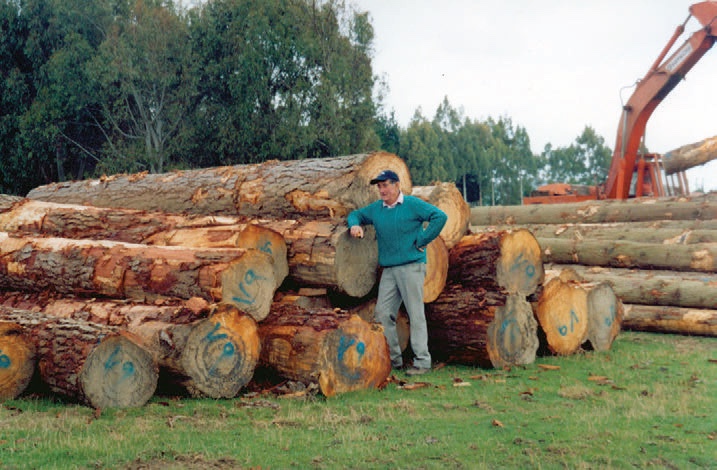
At this stage, if not earlier, you may like to ask your consultant if it is possible to see some of your logs being sawn, provided they are not all going overseas on a boat. It is a worthwhile and satisfying experience to also take any of the people involved in the silviculture to see pruned clear boards coming off the saw.
Post-harvest work
The contact with the sawmill owners is always good, and if they are happy with the quality of the logs they may be interested in the next parcel of timber you have for sale. When the last load has gone out of the gate there is still work to be done. If the block is to be replanted, land preparation decisions will be required and you should be aware of potential weed problems with the opening up of the soil.
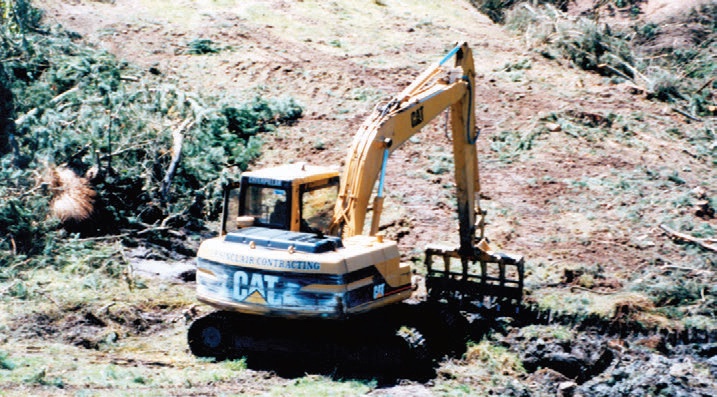
Successful establishment of the second crop is rarely as simple as the first time and several different problems can be expected. Where the land has a history of only scattered broom and gorse, you can expect a mass of seedlings to grow as soon as the soil is moist. Black pine bark beetle is another which can cause problems, as it lives in the harvest slash and only shows its presence after some juicy seedlings have been successfully established and are about a year old.
Delaying planting for a year and giving the area an aerial spray appears to solve both these problems, and with luck avoids a post-plant spray. As indicated earlier, obtaining some good practical advice from experienced people can also save considerable money and heartache.
The skid site, if on an open paddock, will have become very compacted and often the simplest way to reinstate the area is to cultivate and sow in new pasture. Now you can reflect on the whole operation, and make changes where you think you can improve. For the past 30 years or so that land has been productive, and in most cases more than it would have been had it been grazing stock.
Ken Stephens is a member of the South Otago branch and is a past president of the NZFFA.

 Farm Forestry New Zealand
Farm Forestry New Zealand